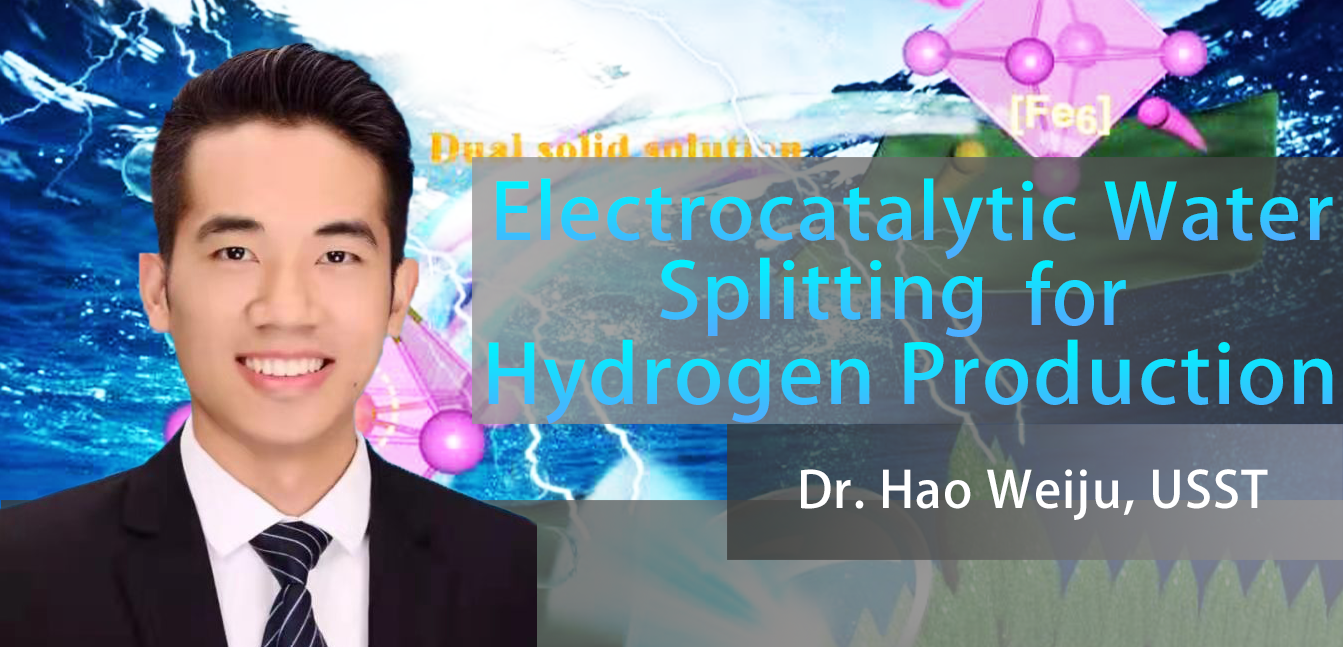
Major progress in highly efficient electrocatalytic water splitting for hydrogen production made by Dr. Hao Weiju, College of Science of USST.
Dr. Hao realized efficient electrocatalytic water splitting for hydrogen production by constructing flexible electrodes, and published related achievements in internationally known journal such as Energy & Environmental Science (IF:30.250)and Applied Catalysis B: Environmental (IF:16.683).
Among the developed new kinds of energies, hydrogen energy has been regarded as the ideal candidate for replacing the traditional fossil fuels. One hinge to realize the application of hydrogen energy is the availability of efficient and sustainable hydrogen production method. Recently, electrocatalytic water splitting has attracted enormous attention for the hydrogen production because of its simple principle, rich source, and easy coupling with other green energies such as solar and wind power. Dr. Hao developed a convenient, economic, and effective route for synthesizing a bifunctional self-supporting electrocatalyst composed of grafting boron-doped FeNi solid solution nanosheets-assembled microflowers onto the activated hydrophilic sponge (BFeNi@HS) for water splitting. This finding paves a new way to design and fabricate a high-active, low-cost and long-life nonprecious metals-based electrocatalysts. The paper entitled “Highly efficient overall-water splitting enabled via grafting boron-inserted Fe-Ni solid solution nanosheets onto unconventional skeleton” was published in an international journal: Applied Catalysis B: Environmental.

As one of the key challenges for scalable and sustainable water electrolysis, the development of an efficient, durable, and economic catalytic electrode has become a highly active and exciting area. Dr. Hao cooperated with researchers from Fudan University to develop a family of robust catalytic electrodes by depositing conductive catalysts on insulating substrates of paper, cloth and sponge, which bring dramatic advantages of high performance, low-cost, lightweight, eco-friendliness, flexibility, and simple and scalable fabrication. The remarkable performance of the catalytic electrodes may be attributed to a combination of high conductivity, active electrocatalyst, and favorable structure. The paper entitled “Fabrication of practical catalytic electrodes using insulating and eco-friendly substrates for overall water splitting" was published in a top academic journal: Energy and Environmental Science.

Link to the papers: https://doi.org/10.1016/j.apcatb.2021.120188, https://doi.org/10.1039/c9ee00839j
A Brief Introduction of Dr. Hao Weiju
Dr. Weiju Hao received his Ph.D. in physical chemical from East China University of Science and Technology in July. 2017. Then he continued postdoctoral research station of material science in Fudan University. In July of 2019, he became a lecturer at University of Shanghai for Science and Technology. His research areas include the development of key materials for electrocatalysts for the OER/HER; and scale-up of direct hydrogen production. His research interests focus on design and synthesis of metal boride, metal sulfides and metal phosphides and their applications in electrochemical catalytic fields.


